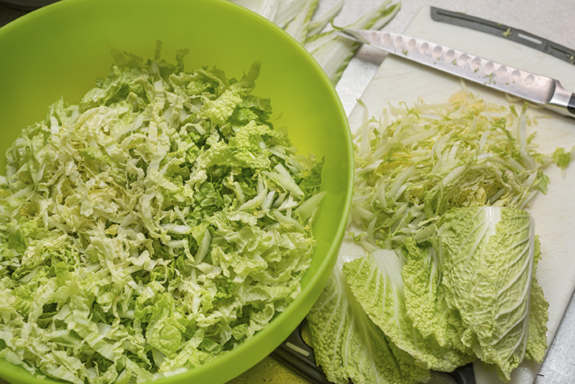The Lazy Person’s Guide to Storing Veggies for the Winter – Part 1, Freezing
I have a love-hate relationship with canning. I HATE spending what seems to be days on end in a hot kitchen in August canning tomatoes, jams and pickles. I LOVE seeing all of the finished canning jars on my shelf waiting for winter consumption. I HATE reaching for a jar on a cold winter’s night that seems a little “off.” Maybe there is too much headspace or it has leaked. When in doubt, I throw it out.
Over the past several years I have moved to more simple ways to put food up. Freezing, drying, and root cellaring work for me and are easy.
Freezing
Individual freezing
I always individually freeze items before putting them in a freezer bag. This way I can take the portion I want. Otherwise, everything comes out in one frozen block. To individually freeze veggies, put them on a cookie or baking sheet allowing plenty of room between the items and pop it in the freezer. Once frozen, put the items in a zippered freezer bag, press out the air, seal, label and return to the freezer. Sometimes I use my food saver vacuum sealer – which I love, but isn’t always necessary and can get expensive with the bags you need to purchase.
Green or Red Peppers
Freezing Peppers is really easy and comes in handy throughout the colder months. Just dice the peppers and then individually freeze them. Keep them handy in the fridge when you need them in a recipe that calls for peppers such as chili, home fries or dishes that start with the “holy trinity” of onions, peppers and celery. Sometimes I mix red and green peppers and sometimes I keep them separate. While they don’t remain crunchy after freezing, that doesn’t matter when they get cooked.
Onions
Like peppers, onions freeze really well. Just dice, freeze individually and store in a zippered freezer bag.
Tomatoes
If you have the energy and desire, plunge the tomatoes into a boiling pot of water for 30 seconds, chill in ice water and remove the skins. Or, just keep the skins on. Core and chop up. If you package them into one or two cup portions, there is no need to individually freeze them first. Just squeeze out all of the air you can before sealing and freezing. Freezer organization is easier if you flatten them out and stack the packages before freezing.
Corn
Technically you should parboil the corn in boiling water for 3-4 minutes and cool it before removing it from the cob and freezing. That will halt the enzymes that will continue to degrade the corn even when frozen. But, if you are going to use the corn for soup, I find it doesn’t really matter. Like the tomatoes, if you package in one or two cup portions, there is no need to individually freeze the corn.
Green Beans
While I find it hard to keep greens beans pleasantly crisp when they have spent time in the freezer, frozen green beans are great for stews and soups. This recipe for Carmelized Green Beans works well if you want to serve frozen green beans as a stand alone side. Green beans should be parboiled in a boiling pot of water for 2-3 minutes and then plunged into a bowl of ice water to stop the cooking. Before freezing it is VERY IMPORTANT to make sure the beans are completely dry. I line a baking sheet with paper towels and lay the beans in a single layer on the towels to absorb the water. Once they are dry, individually freeze them and then store them in a zippered freezer bag.
Zucchini and Summer Squash
Like green beans, frozen zucchini and summer squash work great in soups and stews. I don’t find it necessary to parboil. I cut the pieces into the size I will use – usually half moons about 1/2 inch thick. Individually freeze and then store in a zippered freezer bag.
Greens (Spinach, kale, chard)
Greens are easy. The trick is to get as much moisture out of them as possible after parboiling or steaming and before freezing. Steaming is my preferred approach because the greens don’t soak up as much water in the steaming process. I steam the greens until they are wilted (1 or 2 minutes) and then lay them out on a baking sheet to cool them quickly (instead of plunging them in water and getting them soaking wet). Squeeze out excess moisture and
Things that don’t freeze well (in my opinion)
Broccoli, cauliflower, eggplant
Winter Minestrone – Perfect for all of those frozen veggies!
Here is a great recipe for Minestrone that will make great use of all of those veggies you freeze for the winter.






